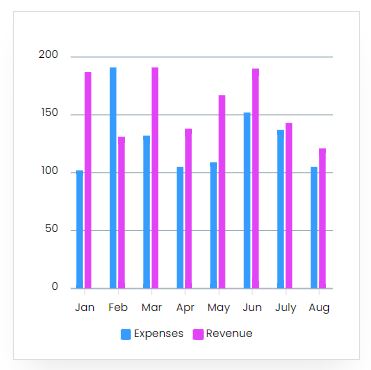Project Report For E Logistic
Introduction
Project Report For E Logistic is as Follows.
E-logistics, also known as electronic logistical or e-logistics, is the use of information technology and electronic systems to improve the efficiency and effectiveness of logistics operations. It entails the use of digital technology such as computers, internet connectivity, software applications, and electronic communication systems to streamline and optimise various areas of the logistics process.
E-logistics involves a wide range of tasks, including inventory management, transportation planning and execution, warehouse management, order processing, tracking and tracing, and supply chain visibility. It makes use of digital platforms and electronic data interchange (EDI) to provide smooth communication and information sharing across many players in the logistics network, such as suppliers, manufacturers, distributors, and customers.
One of the primary advantages of e-logistics is increased operational efficiency. E-logistics reduces paperwork, errors, and improves overall productivity by automating manual operations and enabling real-time data interchange. It provides faster and more accurate order processing, optimised route planning for transportation, and improved inventory management, resulting in cost savings and shorter lead times. E-logistics also improves supply chain visibility by allowing stakeholders to trace and monitor the movement of items and information along the supply chain. Real-time tracking and tracing systems provide insights into the location, status, and condition of shipments, allowing for proactive decision-making and effective management of exceptions or disruptions.

Types Of E-Logistic
E-Procurement: The use of electronic platforms and systems for sourcing and purchasing goods and services is known as e-procurement. It speeds up the procurement process by allowing for online catalogue browsing, electronic requests for quotations (RFQs), online bidding, and automated supplier selection. E-procurement platforms improve efficiency, cut down on paperwork, and allow for better supplier management.
E-Warehouse Management: E-warehouse management solutions optimise warehouse operations by leveraging digital technologies. Inventory tracking, real-time stock management, order fulfilment, and automated picking and packing operations are all included. E-warehouse management solutions enhance inventory accuracy, reduce stockouts, and allow for more efficient warehouse utilisation.
E-Transportation Management: E-transportation management systems are concerned with optimising the transportation process. They include digital tools for route planning, carrier selection, load optimisation, freight tracking, and delivery management. E-transportation management solutions aid in improving delivery accuracy, lowering transportation costs, and improving overall logistics efficiency.
E-Order Processing and Tracking: E-order processing systems allow for electronic order placement, processing, and tracking. Customers can place orders online, and the technology automates the order fulfilment process, including inventory allocation, order confirmation, and tracking information. E-order processing and tracking systems increase order accuracy, decrease manual errors, and provide clients with real-time access into the status of their orders.
E-Reverse Logistics: E-reverse logistics is concerned with the management of product returns, exchanges, and repairs. It includes online return permission, automatic product inspection, and disposition, as well as visibility into the reverse supply chain. E-reverse logistics solutions assist organisations recover value from returned products by streamlining the returns process, improving customer happiness, and streamlining the returns process.
Get Completely Custom Bankable Project Report
Market Potential Of E Logistics
The projected period for 2023–2031 anticipates a 25.09% CAGR to bring the global e-commerce logistics market size from 341.02 billion in 2022 to 2518.28 billion by 2031.
Expenses

Product Cost Breakup

Reveneue Vs Expenses

Market Trend

In the near future, transportation will continue to dominate the e-commerce logistics market share. As e-commerce has grown in popularity, so has the demand for transportation services, as more and more goods must be moved from warehouses to customers’ homes. Transportation is an essential component of the e-commerce logistics ecosystem since it allows for the timely and cost-effective delivery of items to customers. To keep up with the expansion of e-commerce, the logistics business is continuously expanding, and transportation companies are investing in technology and infrastructure to expedite operations and fulfill the demands of online buyers.
The domestic segment is expected to grow in the global e-commerce logistics market. The movement and delivery of items from the seller’s location to the customer’s address within a nation is referred to as domestic e-commerce logistics. Several variables contribute to domestic e-commerce logistics’ supremacy. For starters, the vast majority of e-commerce transactions are domestic, with users purchasing goods from local stores or marketplaces. This means that the majority of logistics activity is focused on domestic shipping and delivery.

